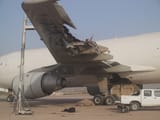Search Results
7/18/2025, 11:28:35 PM
>>2048992
No commercial aircraft presently are designed or certified with that level of automation, so if that’s the goal you’re talking about a Herculean undertaking to design, test, certify and operate an autonomous airliner. Retrofitting the current worldwide fleet is not an option, they are not appropriately designed nor do they have the level of redundancy required. With no human to fall back on it would require a working fail-active (failure tolerant) system in all phases of flight, but I would argue that’s not even enough. Currently if a critical component fails the operator can evaluate what impact it has on the machine, what compensatory action is required to operate it, and adjust the operating technique to accommodate. An autopilot assembles the required inputs in order to generate an output command. If an input is lost the equation doesn’t work, and it cannot generate a command. Extreme examples are the European Air Transport (DHL) A300 attempted shoot down, and United 232, both catastrophic mechanical failures that prevented conventional attitude control. Less extreme but the AHRS issue in the image I posted represents a failure in the Attitude and Heading Computer, which provides gyro and magnetometer output. Without that one would never start an autoland approach since you lack the level of redundancy for a fail-active autopilot. This is just one hurdle in the long line of major obstacles.
>>2048993
Far more incidents are prevented through human intervention, but you never hear about them because they’re never allowed to progress to the point of an incident or accident.
No commercial aircraft presently are designed or certified with that level of automation, so if that’s the goal you’re talking about a Herculean undertaking to design, test, certify and operate an autonomous airliner. Retrofitting the current worldwide fleet is not an option, they are not appropriately designed nor do they have the level of redundancy required. With no human to fall back on it would require a working fail-active (failure tolerant) system in all phases of flight, but I would argue that’s not even enough. Currently if a critical component fails the operator can evaluate what impact it has on the machine, what compensatory action is required to operate it, and adjust the operating technique to accommodate. An autopilot assembles the required inputs in order to generate an output command. If an input is lost the equation doesn’t work, and it cannot generate a command. Extreme examples are the European Air Transport (DHL) A300 attempted shoot down, and United 232, both catastrophic mechanical failures that prevented conventional attitude control. Less extreme but the AHRS issue in the image I posted represents a failure in the Attitude and Heading Computer, which provides gyro and magnetometer output. Without that one would never start an autoland approach since you lack the level of redundancy for a fail-active autopilot. This is just one hurdle in the long line of major obstacles.
>>2048993
Far more incidents are prevented through human intervention, but you never hear about them because they’re never allowed to progress to the point of an incident or accident.
Page 1
